
A very Happy Easter to you! We’re celebrating Easter Sunday with a fun wordsearch. Simply click on the link or image below to open and print out. The words can go in any direction. Good luck!
[Read More...]
A very Happy Easter to you! We’re celebrating Easter Sunday with a fun wordsearch. Simply click on the link or image below to open and print out. The words can go in any direction. Good luck!
[Read More...]
On this day in Tudor history, 11th April 1533, Good Friday, King Henry VIII informed his council that Anne Boleyn, the woman he’d married in January 1533, was his rightful wife and queen, and should be accorded royal honours.
Finally, things were going right for the couple, who had been waiting for this moment since 1527.
Find out more about what had led Henry VIII and Anne Boleyn to this point, and why they thought that the Great Matter would be sorted out much quicker, in today’s talk.
[Read More...]
On this day in Tudor history, 10th April 1585, Pope Gregory XIII died from a fever. He was succeeded by Pope Sixtus V.
Pope Gregory is known for his reform of the calendar. He introduced what is now called the Gregorian Calendar, or Western or Christian Calendar, replacing the Julian Calendar, which had been used since 45 BC.
But why was this reform needed and how was it done?
Find out more about it, and how England didn’t use it until the 18th century, in today’s talk.
[Read More...]
Let’s forget the horrible things that are happening in the world at the moment and talk about some yummy Easter treats – hot cross buns!
[Read More...]
In a tradition dating back to the medieval period, every year on Maundy Thursday, Queen Elizabeth II visits a church or cathedral for a special service in which she presents local pensioners with Maundy money. This year, the Queen was due to go to St George’s Chapel, Windsor Castle, but, due to the special measures in place to protect people from Covid-19, has sent letters to those who were due to receive the Maundy gifts at the special service, along with their special Maundy coins.
This is what the Queen wrote:
[Read More...]
On this day in Tudor history, 9th April 1582, Richard Bertie, member of Parliament, evangelical, and second husband of Catherine Willoughby (other married name Brandon), Duchess of Suffolk, died at Bourne in Lincolnshire. He was laid to rest in St James’s Church, Spilsby, with Catherine, who had died in 1580.
Bertie was Catherine’s gentleman usher and the two became close following the death of her sons from sweating sickness.
Find out more about the man Catherine Willoughby chose to marry for love in today’s talk from Claire Ridgway.
[Read More...]
On this day in Tudor history, 8th April 1586, leading Lutheran theologian Martin Chemnitz died in Braunschweig in Germany. He was aged 66.
Martin Chemnitz is known as the Second Martin, with the more famous reformer and theologian Martin Luther being the first, but what did Chemnitz actually do? What was his role in the Reformation?
Find out about the Second Martin in today’s talk.
[Read More...]
On this day in Tudor history, 7th April 1537, Robert Aske and Thomas Darcy, 1st Baron Darcy, were sent to the Tower of London.
Both Aske and Darcy had been involved in the Pilgrimage of Grace rebellion of 1536, with Aske being “chief captain” of the rebels. Even though Henry VIII pardoned the rebels after negotiations in 1536, Darcy and Aske were arrested, imprisoned and executed as traitors.
Find out more about what happened and more about Robert Aske, the rebel leader, in today’s talk.
[Read More...]
On this day in history, 6th April 1621, in the Stuart period, Edward Seymour, 1st Earl of Hertford, died at Netley in Hampshire. He was aged around 81 at his death.
Now, Hertford is known for his secret marriage to Lady Katherine Grey, sister of Lady Jane Grey, and their conjugal visits in the Tower of London, but Hertford had a thing for secret marriage and married twice more, all in secret. And then his son and grandson also had secret marriages!
Find out more in today’s talk.
[Read More...]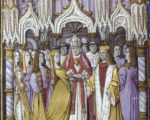
Catherine of Valois was the youngest daughter of Charles VI of France and Isabella of Bavaria. She was born in Paris in the Hotel St Pol on 27th October 1401. Her childhood was beset with struggles as her family managed the divisions between the Armagnac and Burgundian factions in France. Rumours circulated that Catherine was rejected by her mother and her father, who was said to be mentally unwell, and that she would have been abandoned to live in poverty if not for kindly servants. As with all historical rumours, the truth of these claims cannot be verified. This being said, little is really known about her childhood.
We know that Catherine was betrothed in June 1403 to Charles, the grandson and heir of Louis, Duke of Bourbon, however, by 1408, this betrothal seems to have been retracted. In 1408, Henry IV suggested that a marriage between England and France would help to strengthen peace. Catherine’s name, therefore, recurs during the diplomacy that took place in the next decade. By January 1414, Henry V stated that he would marry no one else before the 1st May. A portrait of Catherine brought from France in 1415 aided marriage negotiations. However, due to the English campaign at Agincourt, the marriage plans were halted until 1418. Henry and Catherine met at Meulan on 2nd June 1419. The meeting was said to have gone successfully, with Henry V being smitten and determined to marry her, promising to give her 10,000 marks and renouncing his title ‘King of France.’ Henry’s terms were that he be recognised as regent during Charles VI’s lifetime. These terms were accepted, and Henry V arrived in Troyes in 1420 to confirm their acceptance. The following day, the betrothal was confirmed, and on 2nd June they celebrated their marriage.
[Read More...]
Today is Palm Sunday, the first day of Holy Week and the day that commemorates Jesus, the Messiah, entering the city of Jerusalem on the back of a donkey.
Here, where I live in Spain, it’s usually marked with processions just like it was in the medieval and Tudor periods in England. Of course, this year, there aren’t any processions as we are in lockdown. Last year, though, I shared some footage of the Palm Sunday procession from my nearest town Tijola:
[Read More...]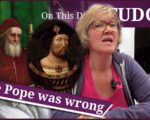
On this day in Tudor history, 5th April 1533, the English Church’s legislative body, Convocation, ruled that the pope was wrong and that Henry VIII was right, i.e. it ruled that the Pope had no power to dispense in the case of a man marrying his brother’s widow, and that it was contrary to God’s law – Catherine of Aragon should not have been able to marry Henry VIII.
Henry VIII was finally getting the annulment of his marriage to Catherine of Aragon sorted out, and it was just as well, seeing that he was married to Anne Boleyn now, she was expecting their first child and was due to be crowned queen shortly!
[Read More...]
This week’s Sunday puzzle is inspired by the Claire Chats talk I did on Tudor Movies on Friday. I didn’t realise there were quite so many!
If you need some help then you can see that video here.
You can open and print out the crossword puzzle by clinking on the link or image below. Good luck!
[Read More...]
On this day in Tudor history, 4th April 1572, William Strachey (and who knows if Claire pronounces his name right!), writer and historian of Virginia, was born in Saffron Walden in Essex, England.
Strachey’s account of the 1609 shipwreck of the Sea Venture in a hurricane was used as a source for William Shakespeare’s “The Tempest”.
Find out more about Strachey, how he was marooned for a year, and why he died in poverty, in today’s talk.
[Read More...]
On this day in Tudor history, 3rd April 1559, the Peace of Cateau-Cambrésis was signed between King Henry II of France and King Philip II of Spain. The previous day, 2nd April 1559, it had been signed between Elizabeth I and Henry II.
The treaty, or rather treaties, brought the Italian Wars to an end. But what were these wars? How was England involved? And what were the terms of the Peace of Cateau-Cambrésis? Find out more in today’s talk.
[Read More...]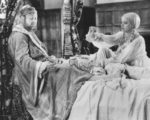
I have several friends who are using lockdown as an excuse to catch up on movies and to watch classic movies they’d missed, it’s a great idea if you’re stuck at home with not a lot to do. And for a Tudor history lover, there is a very long list of Tudor-inspired movies to choose from, dating from the early 1900s to the present day. Let me tell you a bit about some of them.
Do feel free to share any I’ve missed and please do consider reviewing one for our magazine or website – thank you!
[Read More...]Just a quick message from me at this strangest of times.
[Read More...]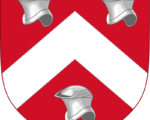
The grandfather of Henry VII, Owen Tudor, or Owain ap Maredudd ap Tudur, was born in 1400. He was the son of Maredudd ap Tudur ap Goronwy and Margaret, daughter of Dafydd Fychan. He is believed to be descended from a prominent Welsh family, and it is thought that Owen’s family took part in the Glyndwr Rising, one of the last major attempts for Welsh independence. Little is known about the early life of Owen Tudor, and, in fact, a large proportion of his life is highly mythologised.
There are theories that Owen fought at Agincourt and became an esquire of King Henry V. In 16th century France, it was said that he was the illegitimate son of an alehouse keeper, and in 18th century Wales, it was purported that his father was a fugitive murderer. These rumours are largely unfounded and show just how much speculation there is regarding the early life of Owen Tudor. We know that in May 1421, an ‘Owen Meredith’ joined the service of Sir Walter Hungerford, who was the steward of the king’s household where he served in France. Following this appointment, his life once again becomes shrouded in mystery. It is within these years, however, that we know Owen Tudor met Queen Catherine, and this meeting has inspired romantics and writers of historical fiction and poetry for years. It is rumoured that the relationship between Owen Tudor and Catherine began when Owen met Catherine by falling into her lap while dancing, while another story claims that Owen Tudor caught Catherine’s eye while he was swimming! Regardless of how they met, however, their subsequent relationship would change the English monarchy, removing the Plantagenet dynasty and replacing it with their very own Tudor one.
[Read More...]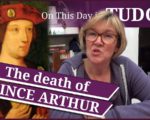
On this day in Tudor history, 2nd April 1502, Arthur, Prince of Wales, son and heir of King Henry VII and Elizabeth of York, died at Ludlow Castle. He was just fifteen years old, and had only been married to the Spanish princess Catherine of Aragon for four and a half months.
In today’s talk, I discuss his death and the theories regarding Arthur’s cause of death, which include sweating sickness, consumption, testicular cancer and Atypical Cystic Fibrosis.
[Read More...]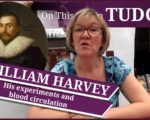
On this day in Tudor history, 1st April 1578, English physician William Harvey, was born in Folkestone, Kent. Harvey has gone down in history as being the man who discovered the circulation of blood, and he was also physician extraordinary to King James I and King Charles I.
How did Harvey work out that the heart pumped the blood around the body and how was his challenge of Galen’s work received?
Find out more about William Harvey’s work, and also his role in the pardoning of women accused of witchcraft, in today’s talk.
[Read More...]
Welcome to this month’s expert talk – Sarah Bryson is sharing her knowledge and passion for the Brandon men in this wonderful hour and 15 minute presentation which is packed with information.
[Read More...]